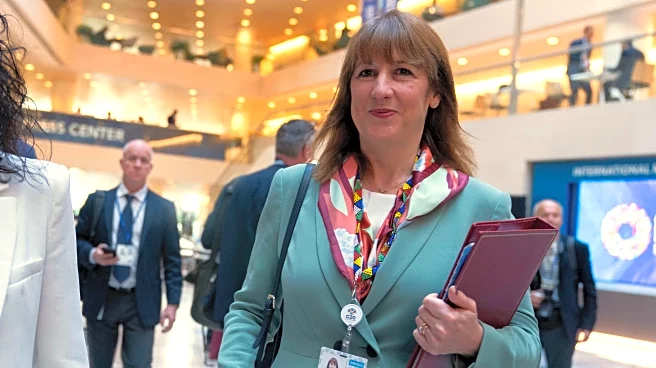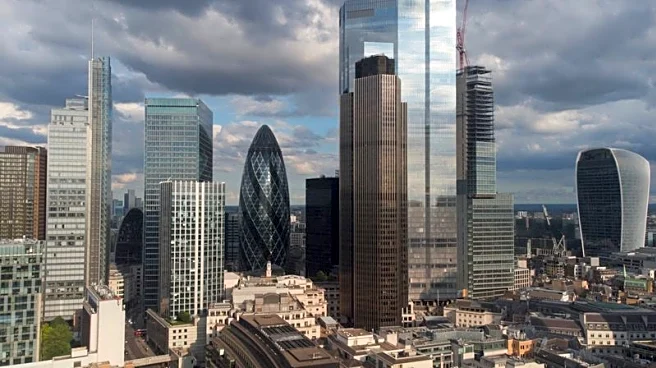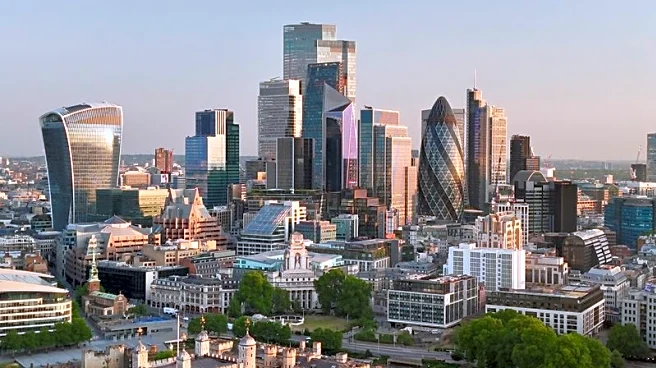What's Happening?
Inflation in the United Kingdom remained steady at 3.8% in the year to September, according to the Office for National Statistics. This figure was unchanged from the previous two months, defying economists'
expectations of a rise to 4%. The stability in inflation is attributed to higher fuel prices being offset by lower food costs. This development has increased the likelihood of the Bank of England considering another interest rate cut in its upcoming policy meeting on November 6. The central bank had previously held its main interest rate at 4% due to inflation concerns.
Why It's Important?
The steady inflation rate is significant as it suggests that inflationary pressures may have peaked, providing some relief to policymakers and the public. A potential interest rate cut by the Bank of England could stimulate economic activity by making borrowing cheaper, which is crucial as the UK economy navigates post-pandemic recovery challenges. Additionally, the inflation rate is used to adjust welfare benefits, meaning the cost of funding these benefits will be lower than anticipated, potentially easing fiscal pressures on the government.
What's Next?
The Bank of England's decision on interest rates will be closely watched, as it could signal a shift in monetary policy aimed at supporting economic growth. Treasury chief Rachel Reeves is also preparing a budget statement for November 26, where tax increases are expected. The steady inflation rate may influence these fiscal decisions, as it impacts government spending and economic forecasts.













